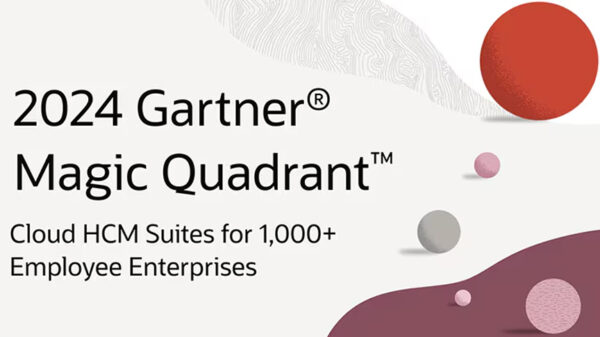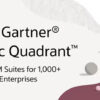By Cherian Varghese, Regional Managing Director for ASEAN, Oracle
In January 2018, a massive downpour hit the city of Bangkok, flooding the capital and surrounding provinces. Throughout the city, traffic came to a standstill. Office workers heading to work during the morning rush hour were affected, with some not making it to work that day.
Now imagine another scenario: several supermarkets are facing a crisis in a city with a population of close to 1.5 million as their shelves are running low on rice. The problem: a local logistics company missed processing the local grocers’ routine bulk orders to stock up rice supplies.
Now 51 years into its establishment, ASEAN has significantly evolved and progressed on many dimensions. Collectively, ASEAN today is the sixth largest economy in the world, with a combined GDP of US$2.55 trillion in 2016, and is projected to be the fourth largest economy by 2050. Its economic development has also led to social progress – poverty has been reduced, with the proportion of the ASEAN population living with less than US$1 per day falling from 47% in 1990 to 14% in 2015. Nutrition and quality of healthcare have vastly improved, contributing to longer life expectancy across the region.
And yet, when we look closer, despite the progress the bloc has achieved over the past five decades, the scenarios painted above still reflect the realities in this region. Amidst its achievements to become a global economic powerhouse, supported by rapid urbanization all across the region, more efforts are needed to improve the quality of life for a majority of the ASEAN population, especially those in emerging economies. Rapid urbanization is taking a toll on infrastructures, and governments still have to grapple with issues like city congestion, water and air quality levels, poverty, rising inequalities, urban-rural divide, citizen security and safety. These are the issues holding ASEAN back from the next chapter of its growth. For ASEAN to move ahead and realize its potential, the government and public sector have to work together to address the challenges at bay.
Harnessing ideas and capabilities through the ASEAN Smart Cities Network
As part of its chairmanship of ASEAN in 2018, Singapore has proposed the establishment of the ASEAN Smart Cities Network (ASCN), a platform for member states to collaborate towards the common goal of smart and sustainable urban development, with technology being the solution and enabler to improve citizen’s lives. The network will see 26 cities piloting the project to share ideas and best practices around how ‘smart’ technologies such as sensors, data analytics and artificial intelligence can help address issues arising from rapid urbanization.
Across ASEAN, various cities and municipalities have already been investing in “smart city projects”, testing proofs of concepts around the Internet of Things to find solutions ranging from provision of elderly care to managing traffic congestions during rush hour. The consolidation of such efforts through a collaborative platform such as the ASCN is a move in the right direction, which can help ASEAN better harness ideas and capabilities within the region, bringing together insights from the region’s think tanks, expertise from leading technology players and policies from ASEAN’s government organizations.
The power of data
Central to the ASCN initiative is the role of technology to address the issues facing urban cities in this region. It goes without saying that in the digital age we are in, data is a smart city’s most vital asset. It provides governments with insights and influences decisions or actions required to resolve issues facing the city.
Think about the two scenarios above. The first anecdote is relatively common around the region and is in fact not unique to ASEAN.
Mirroring a similar challenge but with a different outcome, in Buenos Aires, the cosmopolitan capital of Argentina and a flood-prone area, the local government embarked on a project to leverage big data to provide insights on rainfall and water levels during stormy seasons. The city installed a vast network of sensors across its underground storm drainage system, which recorded readings of rainfall amounts and water levels during storms and relayed that information in real time back to city officials, creating an effective flood early warning system. Leveraging Oracle Business Intelligence Applications to analyze the readings, city experts are equipped to predict the effect of major weather events so they can take action to warn residents of potentially hazardous flooding.
In the second scenario, had the local logistics company leveraged technology to automate its processes through historical data of when the local supermarkets would typically be running low on rice, such problems could be avoided.
In Vietnam, third-party logistics (3PL) company Bac Ky Logistics, is embarking on a project to automate the scheduling of its deliveries, enabling improvements in transparency, speed of service and optimization of cost with Oracle Transportation Management (OTM) Cloud and the Internet of Things (IOT) Fleet Management application. With analytics embedded into the solution, the company will also be able to visualize its supply chain, logistics and trade information in real time.
We’ve already seen these solutions at play today. Tech-savvy “smart cities” are reacting to heightened demands on scarce resources by developing new capabilities such as artificial intelligence (AI) and sensor-driven analytics to resolve myriad challenges, from crime to congestion. The new insights that result are helping city managers look at old problems in a new light, while cloud computing is making these efforts affordable and realistic.
As urban cities in ASEAN become smarter, public and private sector players have to reconcile with the new oceans of unstructured and semi-structured data, which hold a wealth of hidden insights that can now be explored with technologies. And for data to be effective, they need to be supported by a strong data strategy, standards, processes and tools to ensure the proper collection, classification, analysis, and storage. Without this structure in place, the resulting information silos have the potential to bring lower data consistency, integrity, quality and accuracy leading to inefficiencies, potential incidents and higher costs.
Investing in the future
The data explosion in the digital economy presents both an opportunity and a challenge. Intelligently managed and analyzed in a timely manner, data can become the most valuable asset to help uncover new solutions and accelerate innovation in a smart city. On the other hand, fragmented data and infrastructure, slow access to data, risky manual processing, and expensive resources make it prohibitive to monetize data.
As I speak to customers across the region, both from the public and private sectors, many are still overwhelmed by the challenge of managing enterprise data today. Remarkably, for something so important, many organizations still run manual processes, where data are being managed and shared through conversations, telephone calls, spreadsheets, and e-mail.
For ASEAN to succeed in its vision to intelligently connect cities and improve people’s lives, governments and businesses need to develop a future-ready mentality and identify opportunities and innovations that are worth and investing in. ASEAN has a huge potential to leap forward in this digital era, and technologies from cloud services, autonomous, artificial intelligence and blockchain can contribute to its success.
















































































































